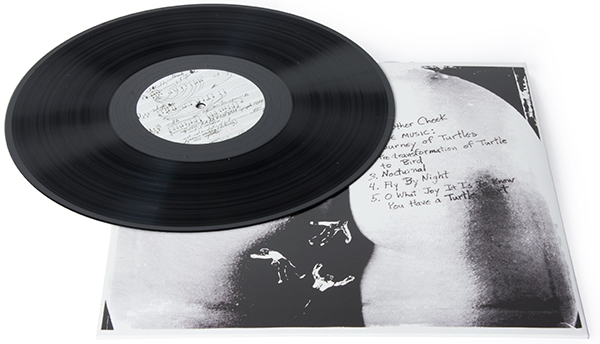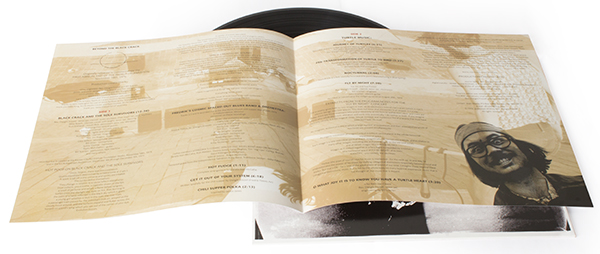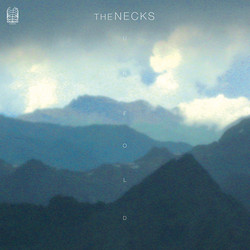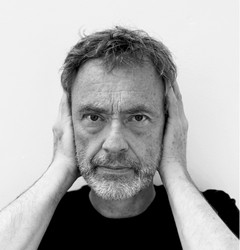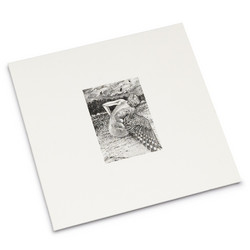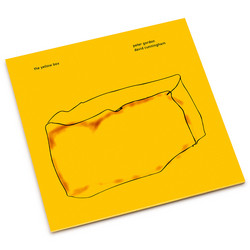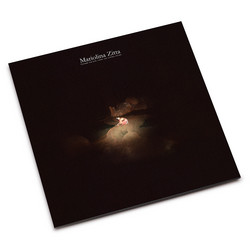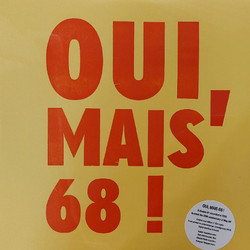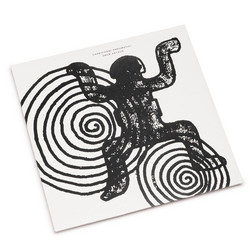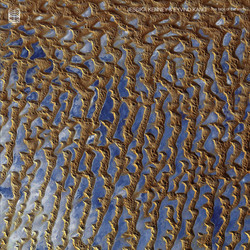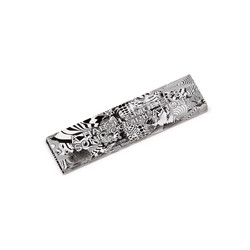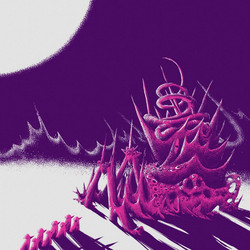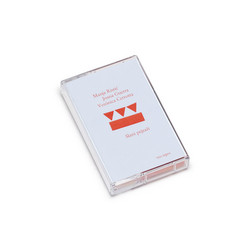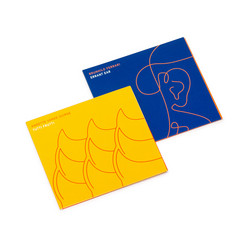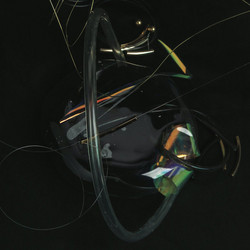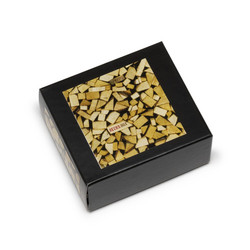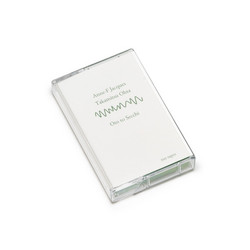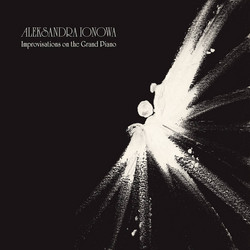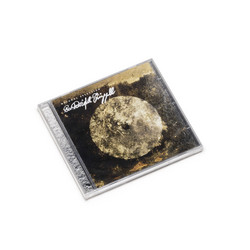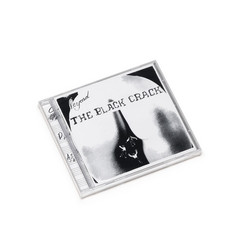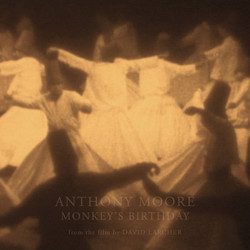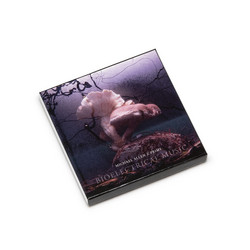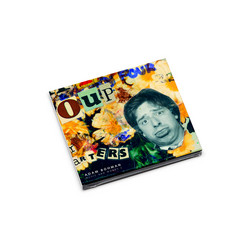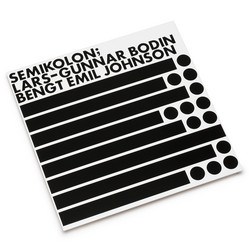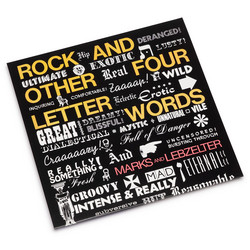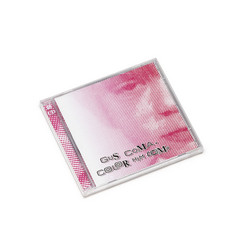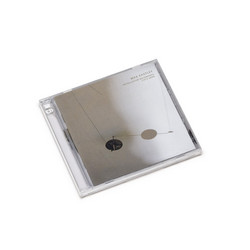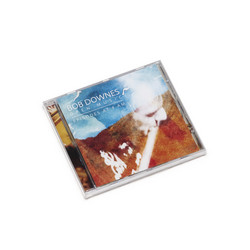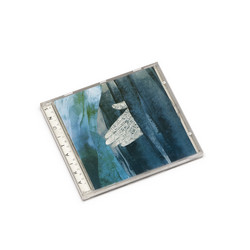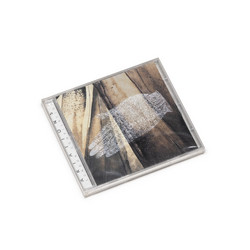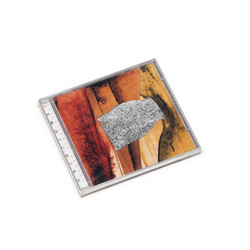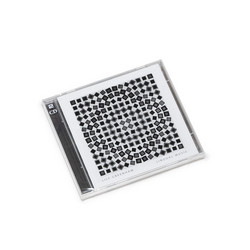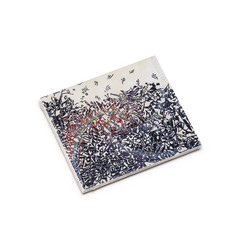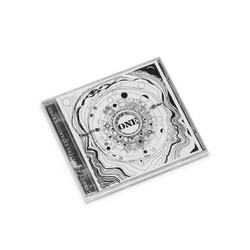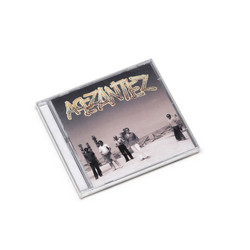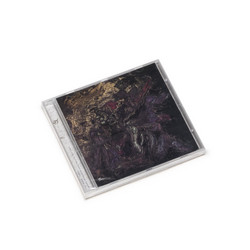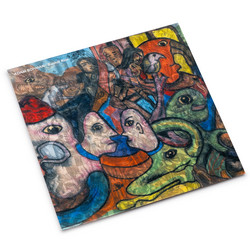When Dwight Frizzell released Beyond the Black Crack, in 1976, very few people heard it. Only 200 copies were pressed, all of them made for people who had ordered ahead of time. Fewer still understood it. The 50-minute work is a hyperextended flexing of avant-garde muscle: free jazz, improvisational sound, noise collage. Listening to the tracks now — with such titles as “Pre-Transformation of a Turtle to a Bird” and “Copulation of Basilea and Hyperion” — you get a sense of the 1970s at their weirdest. It’s part album, part alien abduction. Frizzell was 19 when he recorded Crack.
By the time Paradigm Records came calling for a possible reissue, in 1998, he says even he wasn’t sure about an audience — starting with himself. “When I returned to it, I almost didn’t want to reissue it,” he admits. “It has adolescent humor in it. I was like, ‘I’m not necessarily proud of this. Why are you interested in it? Don’t you like my current work?’ And that sort of thing.” But the reissue happened and, Frizzell says, it opened doors he had thought were long closed. “When I returned to it, I decided to listen to all the tapes that I had archived,” he says. “We re-put it together and re-edited it just like it had been done then, but in better quality. I re-examined the work I did then. It really opened up in me. Revisiting Beyond the Black Crack gave me a way to slow down and listen and work in a new way now.”
Now 60 and a professor in the photography department at the Kansas City Art Institute — from which he graduated in 1979 with a BFA — Frizzell is about to once again go back to Crack. As part of KCAI’s ArtSounds series (a collaboration with the University of Missouri-Kansas City’s Conservatory of Music and Dance that’s marking its 10th anniversary), he’s staging a live performance of the album Tuesday, November 10, at KCAI’s Epperson Auditorium. Called Black Crack, the performance features several of his students — whom he refers to as Sole Survivors, an ode to the original Beyond the Black Crack musicians — and a couple of other frequent collaborators. As on the original LP — which was recorded over the course of two years, in locations as varied as the same Epperson Auditorium and the pyramid across from Harry S. Truman’s grave — the new production puts an emphasis on some rather nontraditional instruments. There is, for instance, Joey Watson’s didgeridoo — which, at 68 inches, slightly outmeasures its owner. The wind instrument, essentially a hollow stick, originated in Australia some 1,500 years ago. Watson has fashioned his himself. “I harvested this in Arizona, where I’m from,” Watson, a recent KCAI graduate, tells me. “It’s an agave stalk that I’ve hollowed out.
You play it by buzzing your lips, like a trumpet is played. It’s a means of controlled breath — you don’t have to stop to take an inhale. You just kind of keep playing, and it drones on. The sound changes, depending on where your tongue is at and how open your throat is.” I feel compelled to ask Watson for an example, and he begins to play. It’s as if he has grown an elephant trunk. The sound is low and cavernous, like a gong going off inside a barrel. Frizzell joins in on an instrument of his own construction, something he calls a “zwoon” — a plastic hose attached to a mouthpiece. Frizzell, who also plays tenor saxophone and clarinet, blows on it with the gusto of a young Ornette Coleman, producing a pitch higher than that of the didgeridoo but still circular. The result is an odd harmony — a passing listener might wonder what zoo animals have been discharged into KCAI’s sound laboratory — but a compelling one.
William Bradley’s instrument is another original. He hasn’t even named it yet. “At the moment, it’s just a solar board,” Bradley tells me, gesturing at what looks like a large panel of Plexiglas with various knobs, colored wires and circuitry pads affixed to it. The Scientific American look of the thing aside, he assures me that he doesn’t know circuitry building at all. Instead, he says, this is the pure product of curiosity plus personal allegiance to Frizzell’s methodology. Bradley, who graduated from KCAI’s sculpture program two years ago, was a freshman when he met Frizzell, in 2010, and he calls the older man a mentor. “In getting familiar with the earlier sound work that he was doing, it was very parallel to my work as an artist,” Bradley says. “Dwight allows his work to take on its own life, and I do the same thing with my circuits. I set parameters but I allow the work to evolve through time.” In order for Bradley’s creation to work, he needs a concentrated spotlight; Frizzell brings in a portable LED and turns off the overhead fluorescents. Perched on his knees, Bradley holds out his hands over the circuitry pads, flexing and waving as a theremin player might, adjusting its knobs. The music plays out like warped radio frequencies, extraterrestrial and hypnotic. In a back room, Marc Deckard, a frequent collaborator since 1994, has his own electric instrument: an eBay-purchased, solid-state Tesla coil. “It puts out probably about a half a million volts in pulses,” he tells me. “I can only turn it on for about 13 seconds at a time. Otherwise, it’ll overheat and likely explode.” The Tesla coil, Deckard explains, is more for theatrics than for sound. When he turns it on, I understand: In the dark room, the Tesla shoots off terrifying jolts of lightning, accompanied by a sound like a Frankenstein’s-monster heartbeat. All these devices, plus a few others, will be present during Tuesday’s Black Crack performance. (There is an interactive drawing machine from KCAI student Matthew Johnson, and saxophonist Taylor King and guitarist Sebastian Thomas will also take part.) But beyond the project’s sonic experimentation — audio time travel, Frizzell calls it — the purpose of Black Crack is to invite a lowering of the barrier between the audience and the players. “Everyone who comes is involved,” Frizzell says. “It’s a big space [the Epperson Auditorium], with not much of a stage, so we keep it open. We’ll have our equipment primarily on the parameters of the open space. The beginning of the first half of the show will condition everyone into the spatiality of sound, the dimensionality of sound, the possibility of shaping time and experiencing that. And you can only do that by listening and experiencing that.” He goes on: “I think, hopefully, everyone will be conditioned — to an extent — so that when we welcome people to join us, it will be casual. The idea is that we invite people in and start handing them things, getting them to participate in a very natural, easygoing way that doesn’t put them on the spot. That’s the trick.” Later, as Watson excuses himself for a sound-therapy class, he gives me a parting blessing, playing his didgeridoo as he passes its gnarly branch back and forth on either shoulder — a bit like a Catholic priest sprinkling holy water, except not as disruptive. I feel the voluminous sound seep into my skull and stay there.
